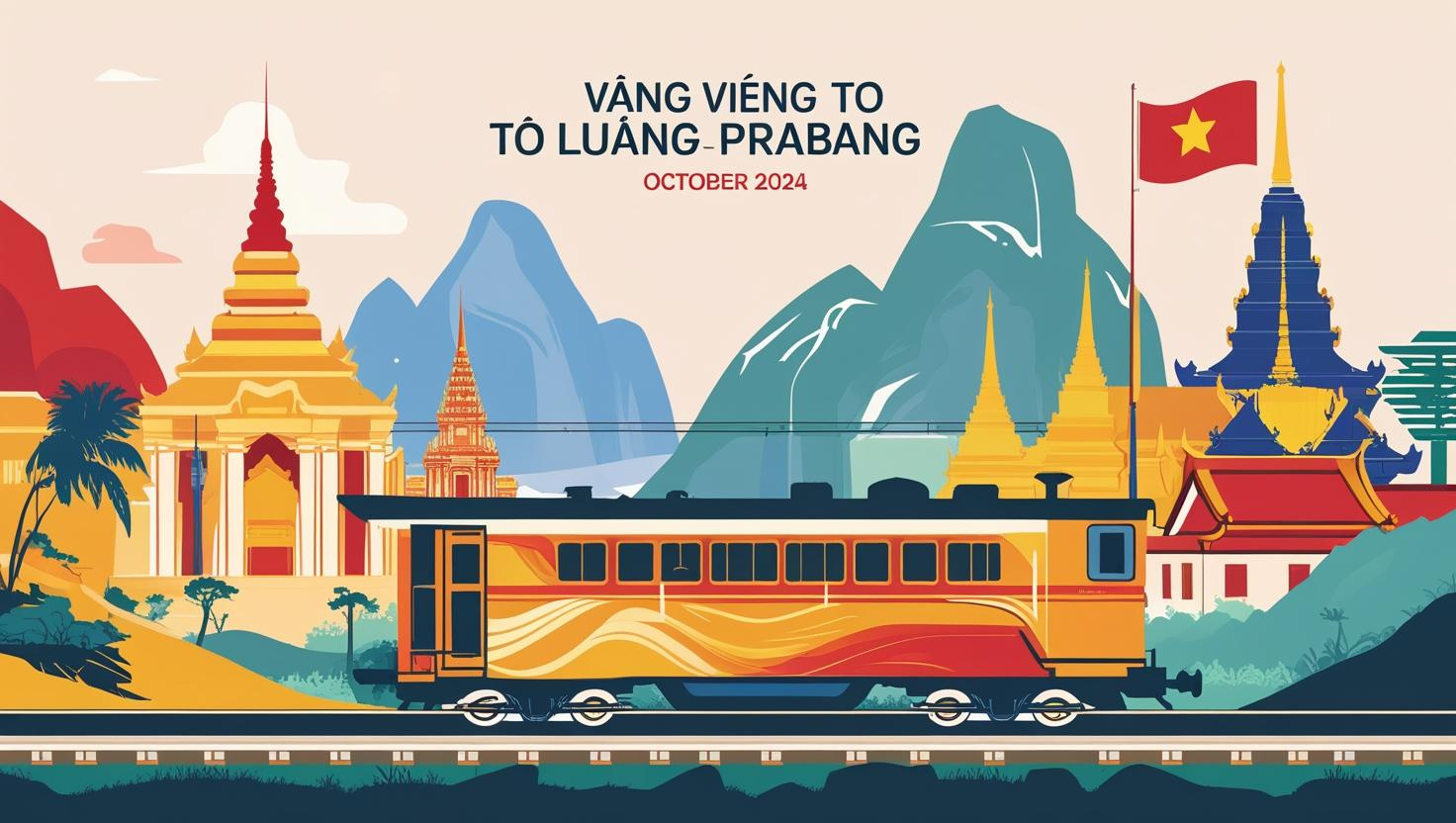In mid-October 2024, I traveled from Vang Vieng to Luang Prabang in Laos using the China-Laos Railway. This article shares my experience, including how to book tickets, fares, and access to the station, based on my personal journey.
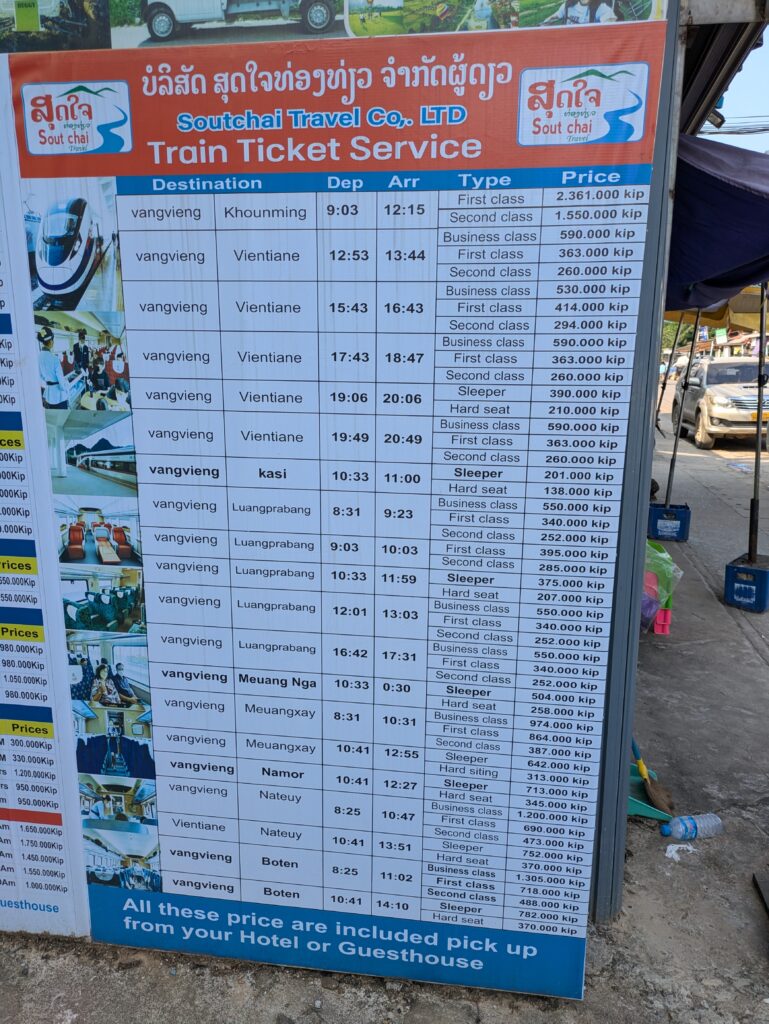
Traveling from Vang Vieng to Luang Prabang on the China-Laos Railway
How to Book Tickets
There are numerous travel agencies throughout Vang Vieng. They all display signs like the one in the photo below, and the prices were consistent across all of them. I believe there isn’t much difference in service among agencies.
Booking Available 3 Days in Advance
When I inquired at an agency, I was told that train tickets could be booked up to three days in advance. I was a bit relaxed and went to the agency after noon. As a result, the desirable daytime slots were already fully booked, and I could only secure a ticket for the last train in the evening (for a second-class seat, which is the standard carriage). To book a convenient time, it’s advisable to visit an agency first thing in the morning or book online.
Fares
The total cost for a second-class ticket from Vang Vieng to Luang Prabang, including tuk-tuk transfer to Vang Vieng Station and service fees, was 252,000 Kip. The pure train fare from station to station was 162,000 Kip, meaning the transfer and fees accounted for 90,000 Kip. For comparison, using the ride-hailing app LOCA from my hotel to Vang Vieng Station would have cost 110,000 Kip. Therefore, booking through an agency was cheaper and simpler than arranging everything separately.
Receiving Your QR Code
After paying and completing the booking, I was asked if I could use WhatsApp, KakaoTalk, or LINE to receive the QR code. I exchanged LINE IDs, and shortly after, the QR code needed to pass through the ticket gate at the station was sent to me via LINE.
Boarding Procedure on the Day of Travel
I was instructed to arrive at the pick-up point 50 minutes before the scheduled train departure. Since the transfer fee was cheaper than ride-hailing apps, I expected a shared ride, but it turned out I was the only passenger. It’s likely that if multiple passengers from the same agency booked the same train, it would be a shared ride.
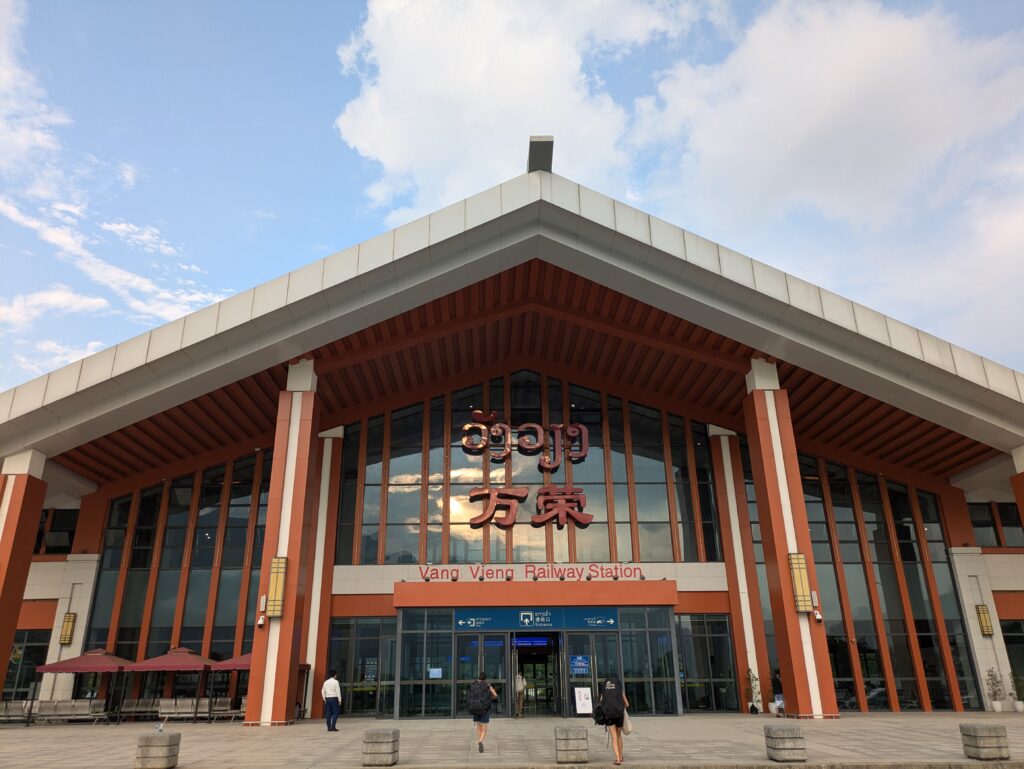
Despite the poor road conditions, we arrived at Vang Vieng Station in about 20 minutes. As you can see in the photo, it’s a very large station building.
The ticket counter is to the right of the main entrance, but same-day tickets are likely sold out. I recommend purchasing in advance.
At the entrance, show your passport and QR code, undergo a baggage check, and then enter the building. The station interior is unnecessarily spacious, with restrooms at both ends and a small Amazon Cafe and convenience store.
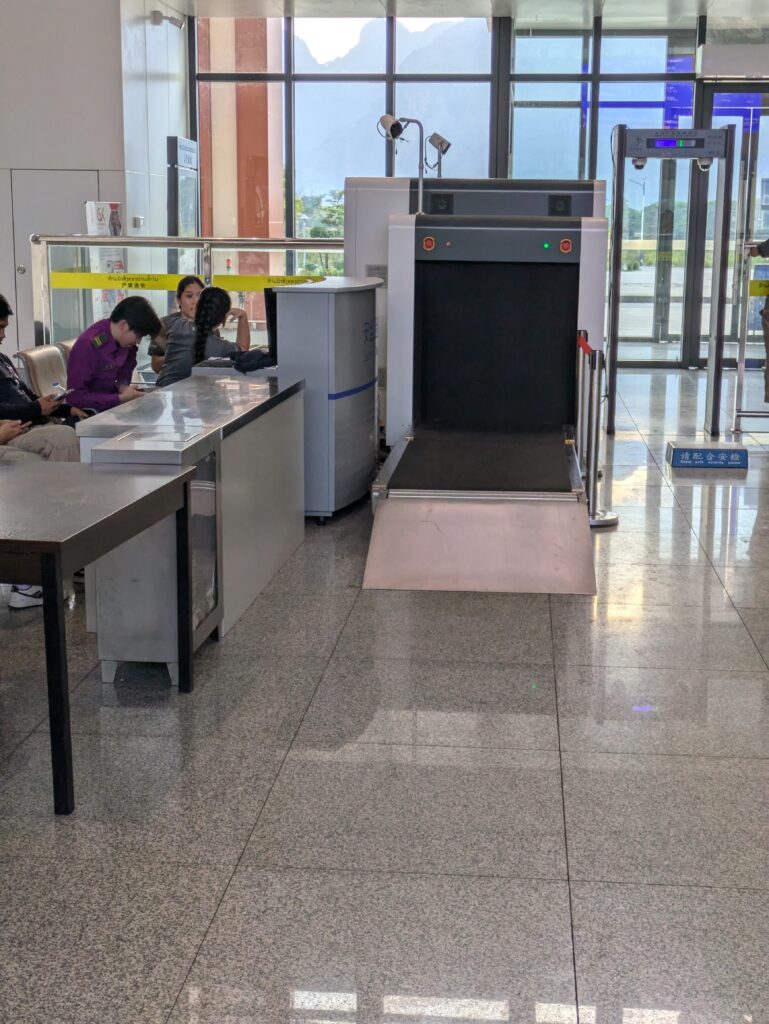
The ticket gates open 15 minutes before departure. An announcement is made, and the electronic display board indicates boarding is in progress, but since all seats are reserved, there’s no need to rush to queue. However, for some reason, everyone lines up early.
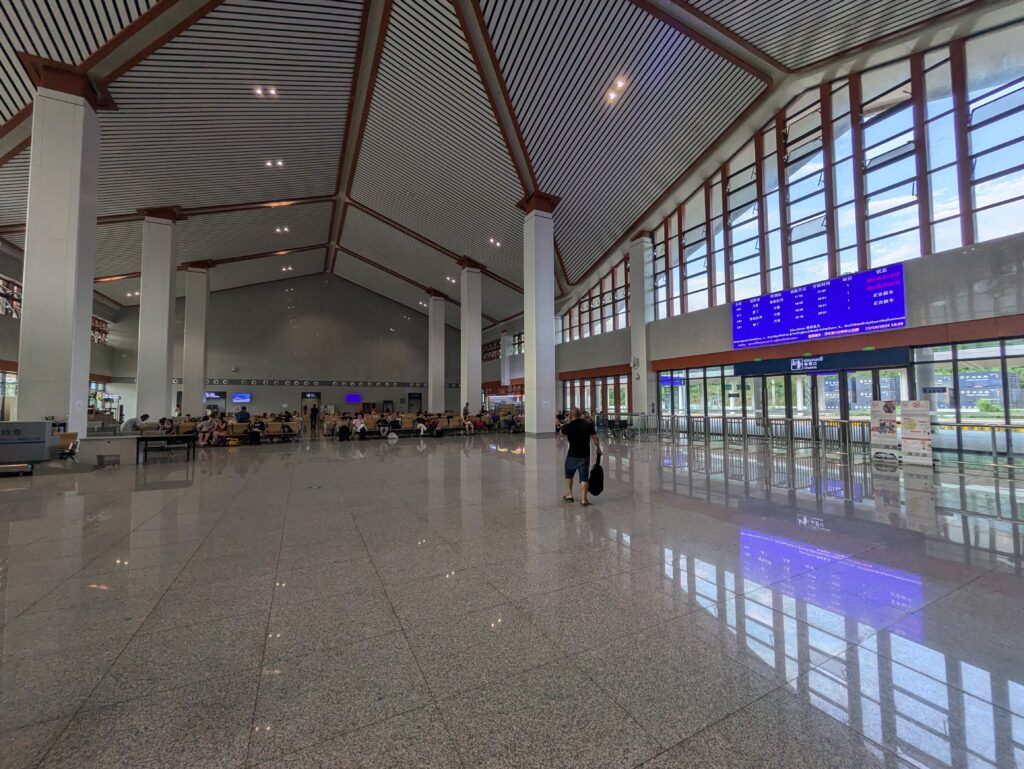

Fifteen minutes before departure, scan your QR code to pass through the gate. Then, line up at the designated car number on the platform indicated by the display board.

However, while platform numbers are shown on the 안내판 (information board), there’s no indication like in Japan that says “Car 1 arrives here.” When I asked a station attendant, they pointed me in a direction, and I found the car numbers posted on a pillar. There were already people queuing there, so I joined the end of the line and waited for the train’s arrival. Still, since it’s reserved seating, there’s no need to queue early.
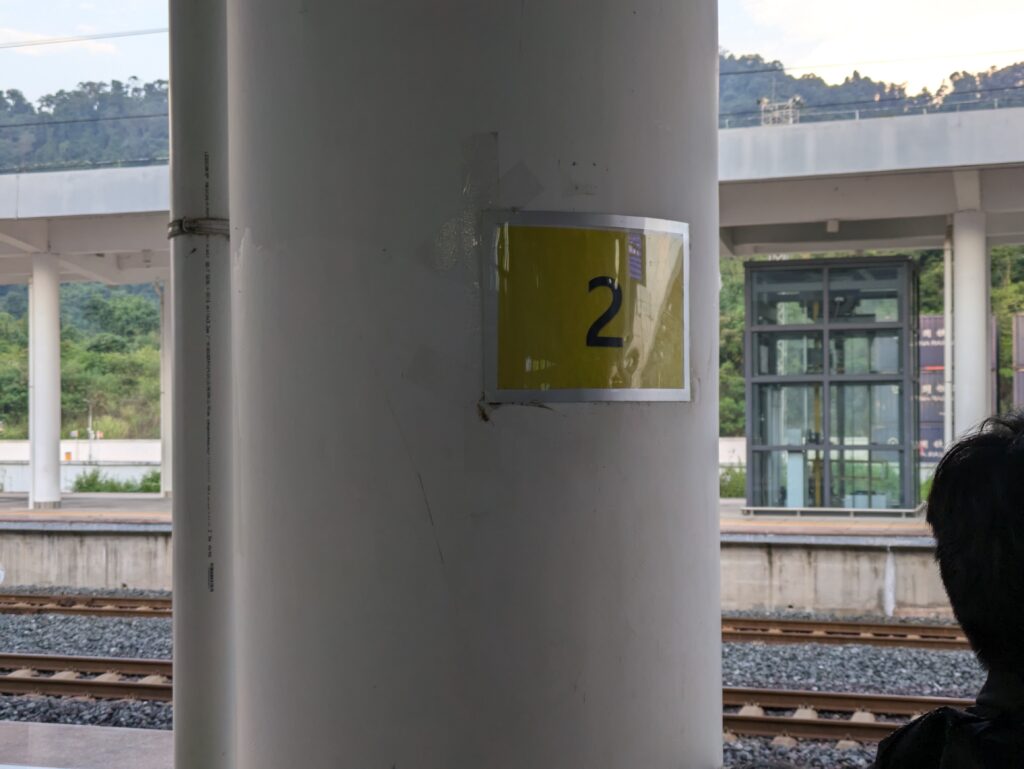
The front of the train serves as the exit for disembarking passengers, and the rear is the entrance for boarding. Take your assigned seat indicated on your QR code.
The seats were full, and it appeared that almost all passengers were Chinese. The female conductor and in-train sales staff always came in pairs. Based on the conductor’s uniform, I assume there are staff members for Lao and Chinese languages. It seems either one or both can speak English.
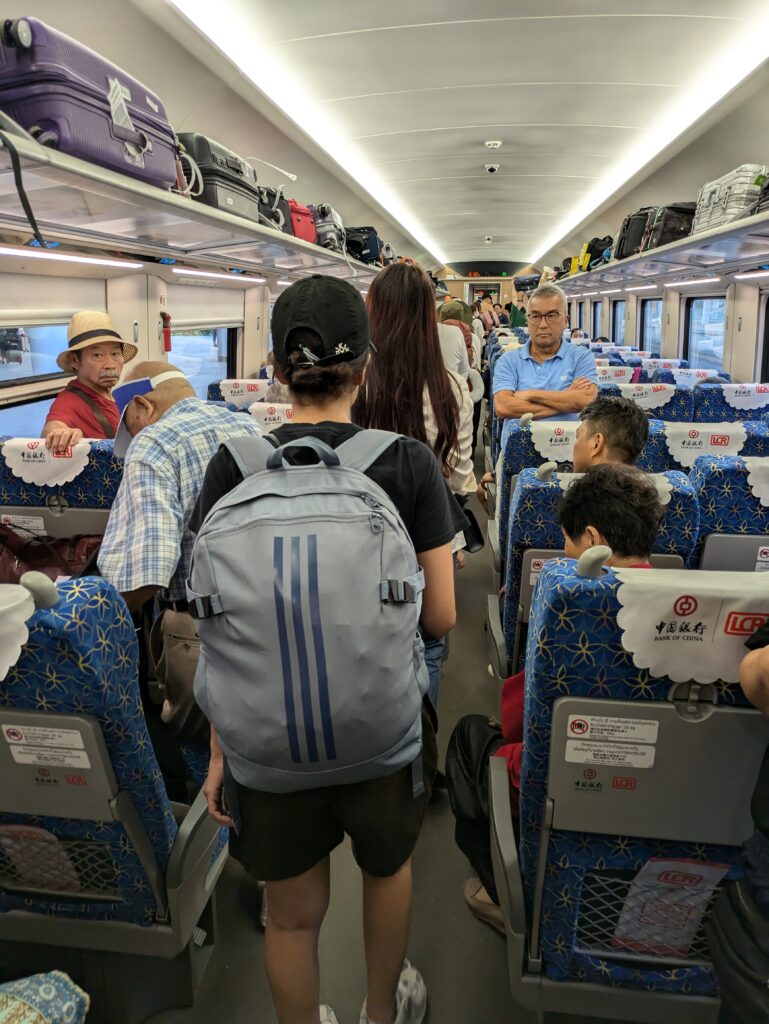
We arrived in Luang Prabang an hour after departing. The train speed felt similar to a Japanese limited express train.
Upon arriving at the station and disembarking onto the platform, a station attendant directed us not to use the central ticket gate but to exit directly to the outside by passing through the end of the building.
Getting from Luang Prabang Station to the City Center (Shared Minibus)
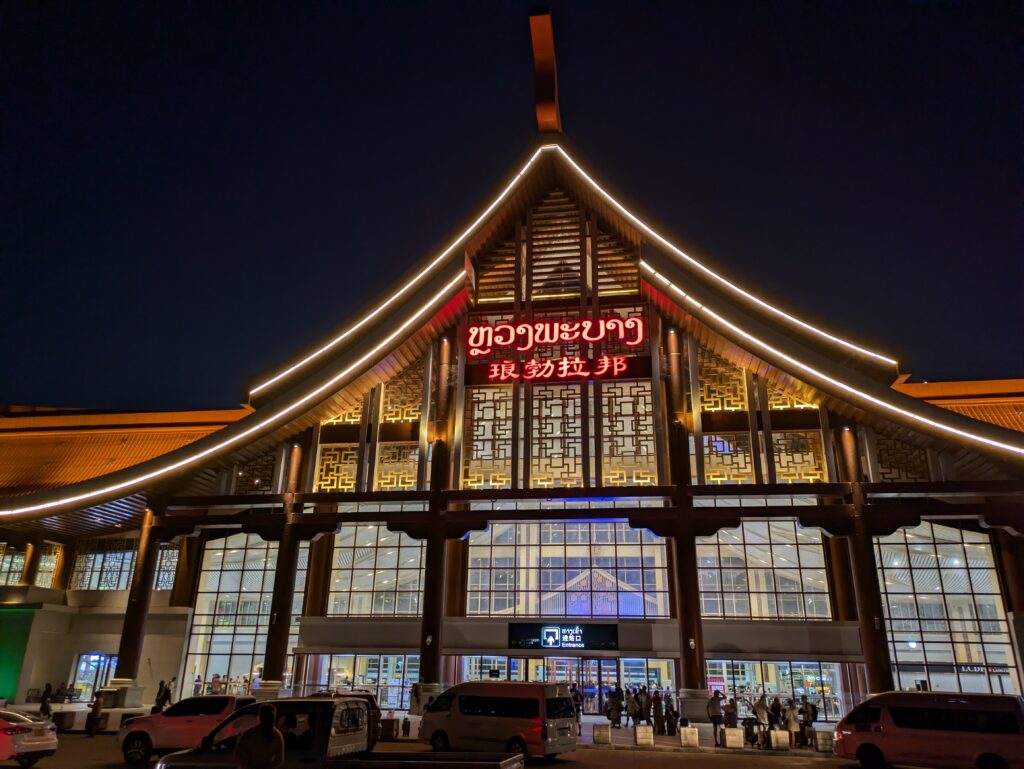
I hadn’t pre-arranged transport from the station to Luang Prabang city center and was planning to use a ride-hailing app. However, there was a sign for shared minibuses at the bottom of the stairs leading out of the station. It cost 40,000 Kip per person. After getting a ticket at the special ticket counter, I was directed to the correct bus.
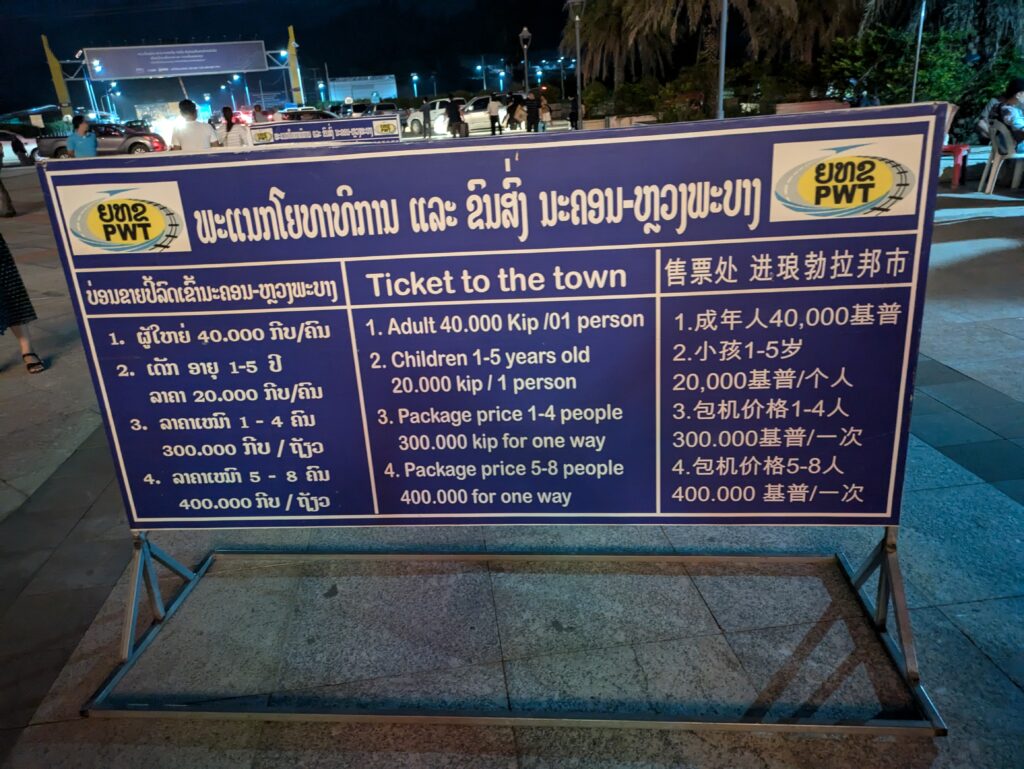
The bus waited until it was packed with passengers before departing. This time, there were about 15 people. Luang Prabang Station is quite far from the city center, so it took about 30 minutes to reach the city.
Before boarding, the driver seemed to know the passengers’ hotels, as the bus stopped several times along the way for passengers to alight at their accommodations. I had booked a guesthouse slightly outside the city center, so I’m not sure how they navigated around the Night Market’s traffic restrictions, but I believe they got me close to my destination.
Conclusion
This article covered the journey from Vang Vieng to Luang Prabang, but the procedure should be similar for departures from Vientiane or in the reverse direction.
Since tickets tend to sell out quickly, I recommend purchasing them first thing in the morning on the day they become available.

